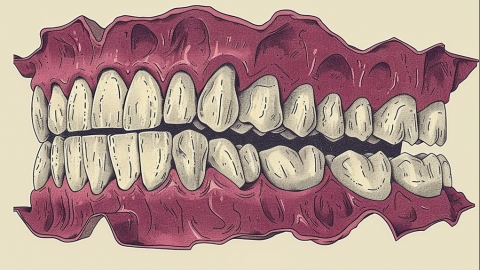How is dental caries treated?
Generally, dental caries may be caused by abnormal tooth structure and morphology, poor oral hygiene habits, enamel hypoplasia, periodontitis, Sjögren's syndrome, and other reasons. Treatment options include general treatment, physical therapy, and drug therapy, under the guidance of a physician. It is recommended to seek timely medical attention and receive treatment under a physician's guidance. Detailed analysis is as follows:

1. Abnormal Tooth Structure and Morphology
The pits, grooves, and fissures on the tooth surface provide hiding places for bacteria, while crowded tooth alignment makes thorough cleaning difficult, allowing food debris and bacteria to remain easily, increasing the risk of dental caries. Regular dental checkups and teeth cleaning, along with brushing teeth using fluoride toothpaste, are recommended.
2. Poor Oral Hygiene Habits
Incorrect brushing habits or lack of effective oral cleaning can produce acidic substances that erode the mineral content on the tooth surface, gradually forming cavities. Dental floss and interdental brushes can be used to clean between teeth, maintaining proper brushing techniques in the morning and evening. Antimicrobial mouthwash may be used when necessary.
3. Enamel Hypoplasia
Enamel hypoplasia usually occurs due to systemic or local factors during tooth development and mineralization. When enamel hypoplasia occurs, the enamel structure on the tooth surface is abnormal, with reduced mineralization and hardness, and decreased acid resistance. Bacteria and their metabolic products more easily erode the enamel, leading to tooth demineralization and gradual development of caries. Changes in tooth surface color, structural defects, and depressions may also occur. Patients should follow medical advice to use fluoride toothpaste for daily brushing, promoting enamel remineralization. For teeth with significant defects affecting aesthetics and function, resin filling restoration can be performed to restore the tooth's shape and function. In cases of severe involvement of multiple teeth, porcelain-fused-to-metal or all-ceramic crowns may be considered for restoration.
4. Periodontitis
Periodontitis is primarily a chronic inflammatory condition of the supporting periodontal tissues caused by microorganisms and their toxic products in dental plaque. When periodontitis occurs, destruction of periodontal tissues leads to tooth mobility and displacement, altering the contact relationship between teeth, making food impaction in interdental spaces more likely. These impacted food residues provide abundant nutrients for bacteria, which multiply rapidly, producing acids that erode teeth, thus triggering caries. Symptoms may also include gum bleeding, bad breath, tooth mobility, and weakened chewing ability. Patients can receive treatment with medications such as metronidazole buccal tablets, amoxicillin capsules, and compound chlorhexidine mouthwash under medical guidance.
5. Sjögren's Syndrome
Sjögren's syndrome may be associated with immune system abnormalities. Autoantibodies produced by the body attack salivary gland tissue, leading to impaired salivary gland function and reduced saliva secretion. The decrease in saliva removes the protective and cleansing effects of saliva on the oral cavity, altering the oral environment and allowing bacterial proliferation, which gradually leads to caries. Symptoms may also include dry mouth, dry eyes, rampant caries, and parotid gland swelling. Patients may receive treatment with medications such as hydroxychloroquine sulfate tablets, total glucosides of paeony capsules, and ibuprofen capsules, as advised by a physician.
In daily life, maintaining good oral hygiene habits is important, including proper brushing in the morning and evening, with each brushing session lasting no less than three minutes; eating a balanced diet and reducing intake of high-sugar and high-acid foods; and undergoing regular dental checkups at least once a year for early detection and treatment of dental caries and other oral problems.





